Headphones
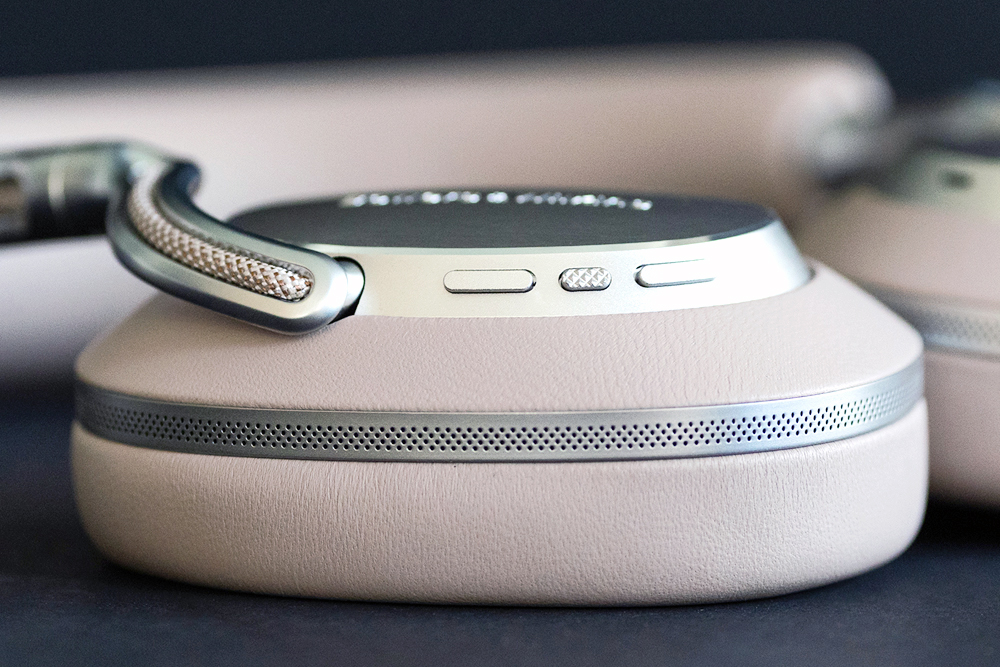
- Details
- Written by: Geoffrey Morrison
Sound: 









Value: 









(Read about our ratings)
I’m in a tough spot with the Px8 S2 headphones. I recently reviewed the Bowers & Wilkins Px7 S3s and found them a solid upgrade over the Px7 S2s. I really liked the Px7 S3s, though they are unquestionably bass-heavy, and if that’s not your thing, they’re not for you. The Px8 S2s are (bit of a spoiler here) far better balanced. They also look a little nicer. My sample’s two-tone beige and silver finish looked beautifully classy.
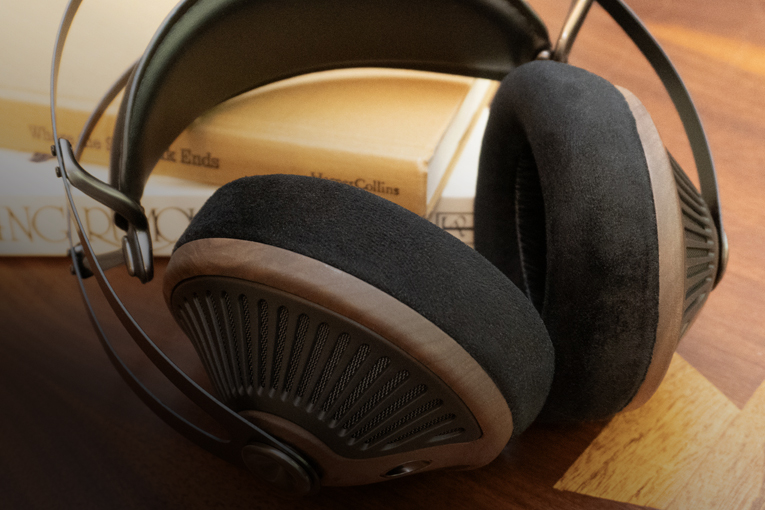
- Details
- Written by: Matt Bonaccio
Sound: 









Value: 









(Read about our ratings)

The English language seems to hold an unfair prejudice against the middle state. Many of the numerous English words and phrases that denote being in-between—mediocre, middle-of-the-road, middle of nowhere, midlife, and middle child, for example—carry negative connotations. In my view, the middle state is not necessarily a bad thing. It can sometimes be quite favorable. Case in point: the latest open-back headphones from Meze Audio, the 105 Silvas.
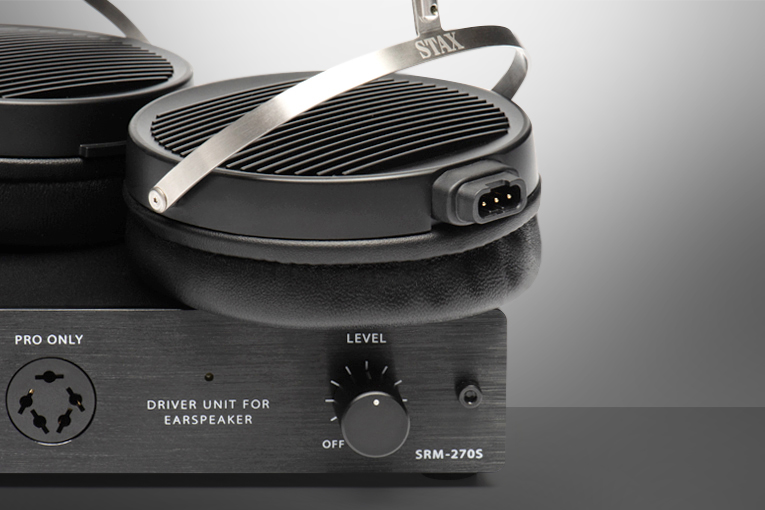
- Details
- Written by: Killain Jones
Sound: 









Value: 









(Read about our ratings)
I believe headphones are a gateway to serious hi‑fi—and an extension of it. In-ear monitors let you listen just about anywhere, without the bulk or expense of a traditional loudspeaker setup. While I love my main hi‑fi rig, my preferred method for critical listening is the over-the-ear headphone setup in my home office, partly because of how much time I spend in that space. Most importantly, a good headphone setup can be assembled much less expensively than a similarly performing loudspeaker setup. The icing on the cake is isolation from the outside world.

- Details
- Written by: Geoffrey Morrison
Sound: 









Value: 









(Read about our ratings)
 For a while now, I’ve wanted to check out more gaming headsets for SoundStage! Solo. Playing games online with friends is a big part of the modern social experience, one that I enjoy a few times a week. A good headset can make a huge difference, not just for your own enjoyment but also for the bonus of your friends and teammates being able to understand you.
For a while now, I’ve wanted to check out more gaming headsets for SoundStage! Solo. Playing games online with friends is a big part of the modern social experience, one that I enjoy a few times a week. A good headset can make a huge difference, not just for your own enjoyment but also for the bonus of your friends and teammates being able to understand you.
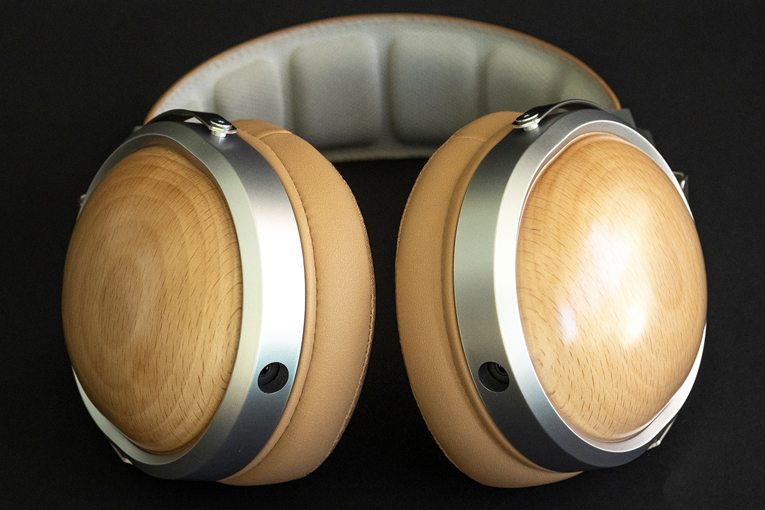
- Details
- Written by: Geoffrey Morrison
Sound: 









Value: 









(Read about our ratings)
 You’ve got to give FiiO credit—the FT1 headphones look high end. With their wood earcups, soft leathery earpads, and brushed metal frame, they look like they could cost several hundred dollars. To be honest, they look better than some actually expensive headphones I’ve reviewed. Impressively, they aren’t. Expensive that is. Prices vary, but the FT1s were selling for around US$165, CA$229, £139, and €169 in early September. Given how great they look, that’s impressively inexpensive. I bought the FT1s, since FiiO is one of the only audio companies that has never returned any of the emails I’ve sent over the last decade. Was it something I said? Probably.
You’ve got to give FiiO credit—the FT1 headphones look high end. With their wood earcups, soft leathery earpads, and brushed metal frame, they look like they could cost several hundred dollars. To be honest, they look better than some actually expensive headphones I’ve reviewed. Impressively, they aren’t. Expensive that is. Prices vary, but the FT1s were selling for around US$165, CA$229, £139, and €169 in early September. Given how great they look, that’s impressively inexpensive. I bought the FT1s, since FiiO is one of the only audio companies that has never returned any of the emails I’ve sent over the last decade. Was it something I said? Probably.
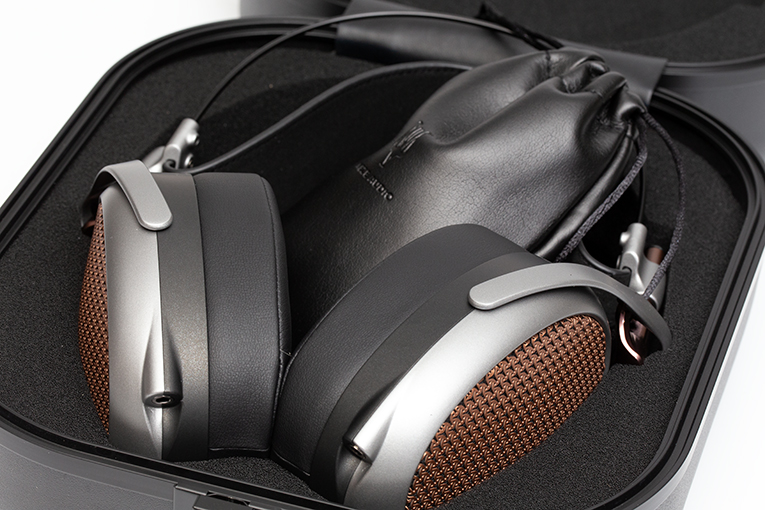
- Details
- Written by: AJ Wykes
Sound: 









Value: 









(Read about our ratings)
 I’m generally skeptical of headphones with four-figure price tags. Meze Audio’s open-back Poet headphones cost US$2000, CA$2799, £1899, or €2000, but it’s a well-established fact that sound quality does not correlate with price. And no matter how fancy the appearance of a pair of headphones, you can’t actually see them in use, unless you plan to listen in front of a mirror! But then again, you don’t get to appreciate the exterior styling of a sports car while you’re driving it, either.
I’m generally skeptical of headphones with four-figure price tags. Meze Audio’s open-back Poet headphones cost US$2000, CA$2799, £1899, or €2000, but it’s a well-established fact that sound quality does not correlate with price. And no matter how fancy the appearance of a pair of headphones, you can’t actually see them in use, unless you plan to listen in front of a mirror! But then again, you don’t get to appreciate the exterior styling of a sports car while you’re driving it, either.
- Bowers & Wilkins Px7 S3 Headphones
- JLab Epic Lux Lab Edition Bluetooth Headphones
- Focal Azurys Headphones
- Sendy Audio Aiva 2 Headphones
- Shokz OpenMeet Headset
- Focal Hadenys Headphones
- HiFiMan Isvarna Headphones
- Stax SR-X9000 and SRM-T8000 Headphone System
- Austrian Audio Hi-X20 Headphones
- Beyerdynamic DT 1990 MkII Headphones
- Meze Audio 105 AER Headphones
- Edifier Stax Spirit S5 Headphones
- Beats Solo 4 On-Ear Headphones
- Sennheiser HD 620S Headphones
- Sivga P2 Pro Open-Back Headphones
- Ollo Audio S5X 1.1 Headphones
- Fostex TH616 Headphones
- HiFiMan Sundara Open-Back Headphones
- PSB M4U 9 Headphones
- Bowers & Wilkins Px7 S2e Headphones
- Beats Studio Pro Headphones
- Sivga Luan Headphones
- Turtle Beach Stealth Pro Gaming Headphones
- Yamaha YH-5000SE Headphones
- Sennheiser HD 660S2 Headphones
- Sony WH-1000XM5 Headphones
- Edifier WH950NB Headphones
- Audeze LCD-5 Headphones
- Sennheiser Momentum 4 Wireless Headphones
- Focal Utopia 2022 Headphones
- Crosszone CZ-10 Headphones
- Sivga Oriole Headphones
- HiFiMan Sundara Closed-Back Headphones
- Focal Bathys Bluetooth Noise-Canceling Headphones
- Meze Audio 109 Pro Headphones
- Sivga SV023 Headphones
- Phiaton 900 Legacy Bluetooth Headphones
- Technics EAH-A800 Bluetooth Headphones
- Edifier Stax Spirit S3 Bluetooth Headphones
- HiFiMan Deva Pro Bluetooth Headphones
- V-Moda Crossfade 2 Wireless Rolling Stones Tattoo You Headphones
- HiFiMan Arya Stealth Magnet Version Headphones
- PSB M4U 8 MKII Bluetooth Noise-Canceling Headphones
- Monoprice Monolith M1570C Headphones
- Meze Audio Liric Headphones
- Grado RS2x Headphones
- Sendy Audio Apollo Headphones
- Mark Levinson N⁰ 5909 Bluetooth Noise-Canceling Headphones
- Soundcore Frames Bluetooth Glasses
- Monoprice Monolith AMT Headphones
- Apos Audio Caspian Headphones
- Beyerdynamic DT 900 Pro X Headphones
- Philips Fidelio L3 Bluetooth Noise-Canceling Headphones
- Austrian Audio Hi-X65 Headphones
- Sendy Audio Peacock Headphones
- Meze Audio Elite Headphones
- Focal Celestee Headphones
- Sivga P-II Headphones
- AKG K72 Headphones
- Soundcore Life Q35 Bluetooth Headphones
- DALI IO-4 Bluetooth Headphones
- HiFiMan HE400se Headphones
- Bowers & Wilkins PX7 Carbon Edition Bluetooth Headphones
- Yamaha YH-E700A Bluetooth Headphones
- Emotiva Airmotiv GR1 Headphones
- Master & Dynamic MH40 Bluetooth Headphones
- Calyx H Headphones
- Beyerdynamic T1 (3rd Generation) Headphones
- Ultrasone Performance 880 Headphones and Sirius Bluetooth Adapter
- Dan Clark Audio Æon RT Closed Headphones
- Philips Fidelio X3 Headphones
- Beyerdynamic T5 (3rd Generation) Headphones
- HEDD Audio HEDDphone Headphones
- Beyerdynamic DT 770 Studio Headphones
- Focal Utopia Headphones
- AIAIAI TMA-2 HD Wireless Bluetooth Headphones
- HiFiMan Deva Bluetooth Headphones
- Atlantic Technology FS-HR280 Headphones
- Monoprice Monolith M1570 Headphones
- Dan Clark Audio Æon Flow 2 Closed Headphones
- Andover Audio PM-50 Headphones
- Marshall Monitor II A.N.C. Bluetooth Headphones
- Drop + THX Panda Bluetooth Headphones
- DALI IO-6 Bluetooth Noise-Canceling Headphones
- Monoprice Monolith M570 Headphones
- Audeze LCD-1 Headphones
- AKG K371 Headphones
- Beyerdynamic Lagoon ANC Bluetooth Headphones
- Zvox Audio AV50 Bluetooth Noise-Canceling Headphones
- HiFiMan Jade II Headphones and Amplifier
- MEE Audio Matrix Cinema ANC Bluetooth Headphones
- Status Audio BT One Bluetooth Headphones
- Meze Audio Empyrean Headphones
- Denon AH-D7200 Headphones
- Cleer Next Headphones
- Focal Stellia Headphones
- KLH Ultimate One Headphones
- Quad ERA-1 Headphones
- HiFiMan HE6se Headphones
- Fostex T60RP Headphones
- Audeze LCD2 Closed-Back Headphones
- Fostex TH909 Headphones
- Tribit Audio XFree Tune Bluetooth Headphones
- HiFiMan Ananda Headphones
- Focal Elegia Headphones
- Base Audio G12 Headphones
- Monoprice Monolith M650 Headphones
- NAD Viso HP70 Bluetooth Noise-Canceling Headphones
- Audio-Technica ATH-ANC700BT Bluetooth Noise-Canceling Headphones
- B&O Play Beoplay H9i Bluetooth Noise-Canceling Headphones
- Audio-Technica ATH-ADX5000 Headphones
- Marshall Mid A.N.C. Bluetooth Headphones
- Beyerdynamic Aventho Wireless Bluetooth Headphones
- PSB M4U 8 Bluetooth Noise-Canceling Headphones
- Bowers & Wilkins PX Bluetooth Noise-Canceling Headphones
- Klipsch Heritage HP-3 Headphones
- Focal Clear Headphones
- AKG N60 NC Wireless Bluetooth Noise-Canceling Headphones
- Acoustic Research AR-H1 Headphones
- Music Everywhere: Audio-Technica ATH-DSR9BT Bluetooth Headphones
- Sony WH-1000XM2 Wireless Noise-Canceling Headphones
- Sennheiser HD 4.50 BTNC Headphones
- Music Everywhere: Audio-Technica ATH-SR6BTBK Bluetooth Headphones
- JBL E55BT Quincy Edition Headphones
- Music Everywhere: JBL Everest Elite 750NC Wireless Headphones
- Tidal Force Wave 5 Headphones
- Monoprice M1060 Headphones
- HiFiMan Susvara Headphones
- Audio-Technica ATH-DSR7BT Bluetooth Headphones
- Libratone Q Adapt On-Ear Headphones
- Music Everywhere: Koss BT539ik Bluetooth Headphones
- Bowers & Wilkins P9 Signature Headphones
- Blue Ella Headphones
- Beyerdynamic Amiron Home Headphones
- Music Everywhere: Altec Lansing MZX300 Bluetooth Headphones
- Music Everywhere: Koss UR42i Headphones
- HiFiMan HE1000 V2 Headphones
- Final Sonorous III Headphones
- Beyerdynamic T 5 p Headphones
- Audeze Sine Headphones
- Sennheiser HD 630VB Headphones
- Music Everywhere: Audio-Technica ATH-SR5BT Bluetooth Headphones
- AKG N60 NC Headphones
- Music Everywhere: Sennheiser Momentum Wireless Bluetooth Headphones
- Sennheiser HD 800 S Headphones
- Music Everywhere: Audio-Technica ATH-WS99BT Solid Bass Bluetooth Headphones
- RBH Sound HP-2 Headphones
- Pryma 0|1 Headphones
- HiFiMan Edition X Headphones
- JBL Everest Elite 700 Headphones
- Music Everywhere: Audio-Technica ATH-S700BT SonicFuel Bluetooth Headphones
- Definitive Technology Symphony 1 Headphones
- NAD Viso HP30 Headphones
- HiFiMan HE1000 Headphones
- Music Everywhere: Outdoor Tech. Tuis Bluetooth Headphones
- AudioQuest NightHawk Headphones
- Music Everywhere: Koss BT540i Bluetooth Headphones
- Bowers & Wilkins P5 Series 2 Headphones
- Music Everywhere: Audio-Technica ATH-MSR7 Headphones
- Oppo Digital PM-3 Headphones
- Torque Audio t402v Headphones
- Music Everywhere: Polk Audio Hinge Wireless Bluetooth Headphones
- Music Everywhere: Monoprice 10585 Bluetooth Headphones
- Oppo Digital PM-2 Headphones
- Music Everywhere: Jam Transit Bluetooth Headphones
SoundStage! Solo is part of
All contents available on this website are copyrighted by SoundStage!® and Schneider Publishing Inc., unless otherwise noted. All rights reserved.
This site was designed by Karen Fanas and the SoundStage! team.
To contact us, please e-mail info@soundstagenetwork.com





